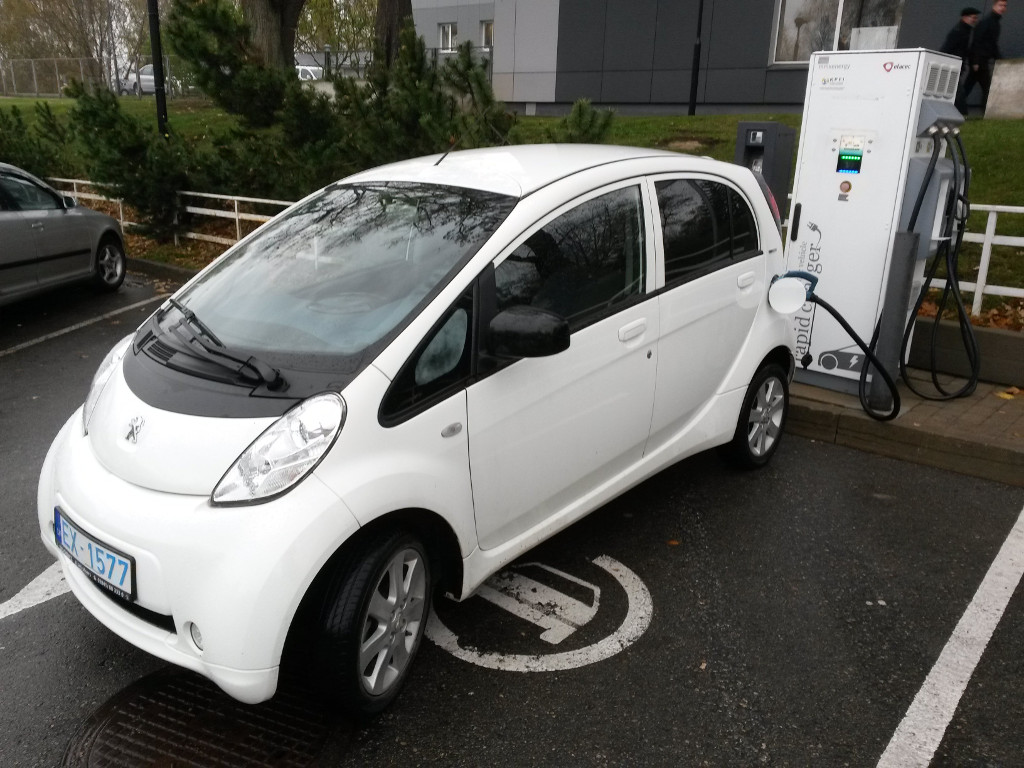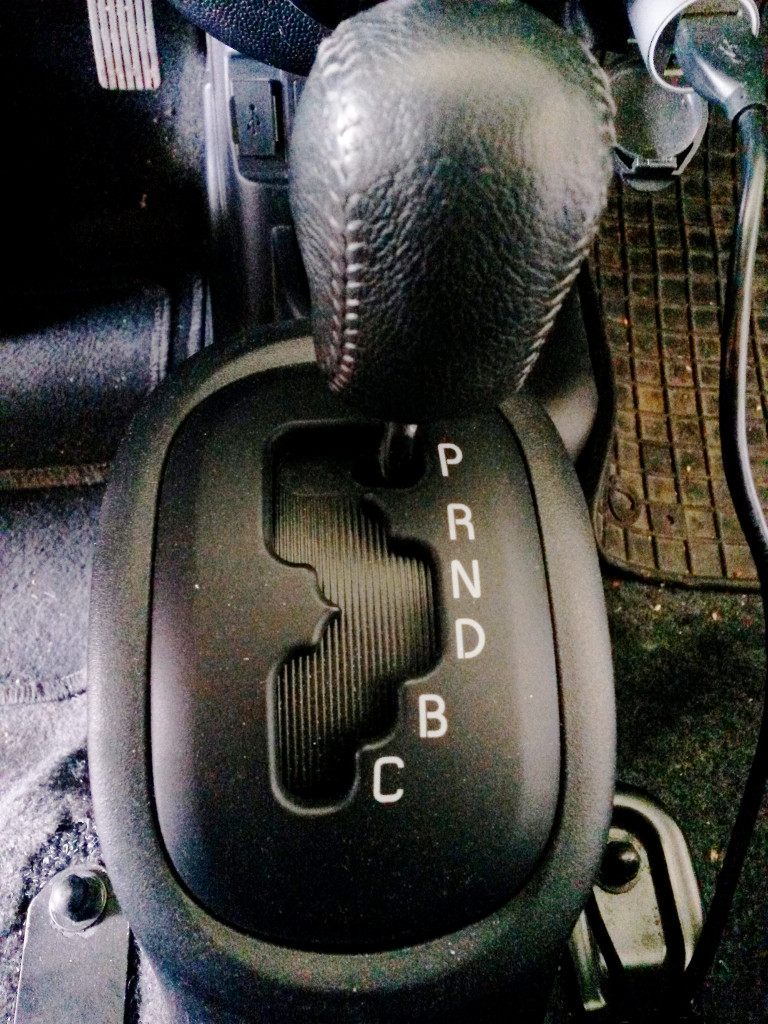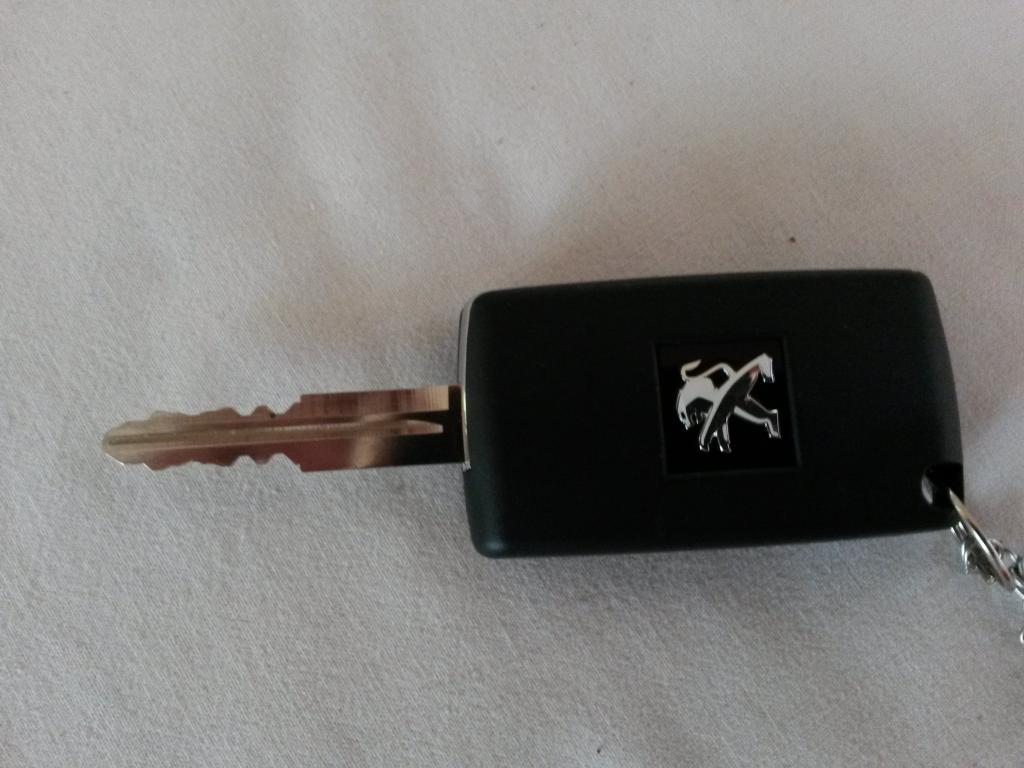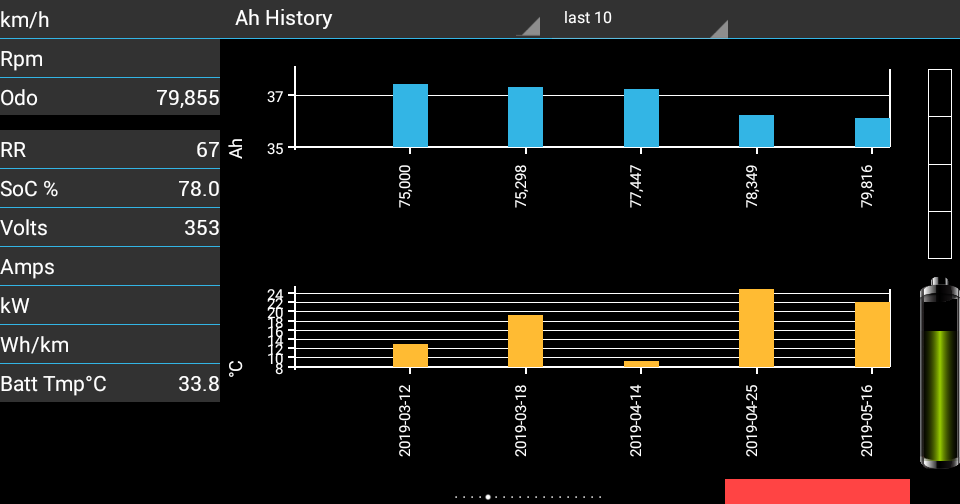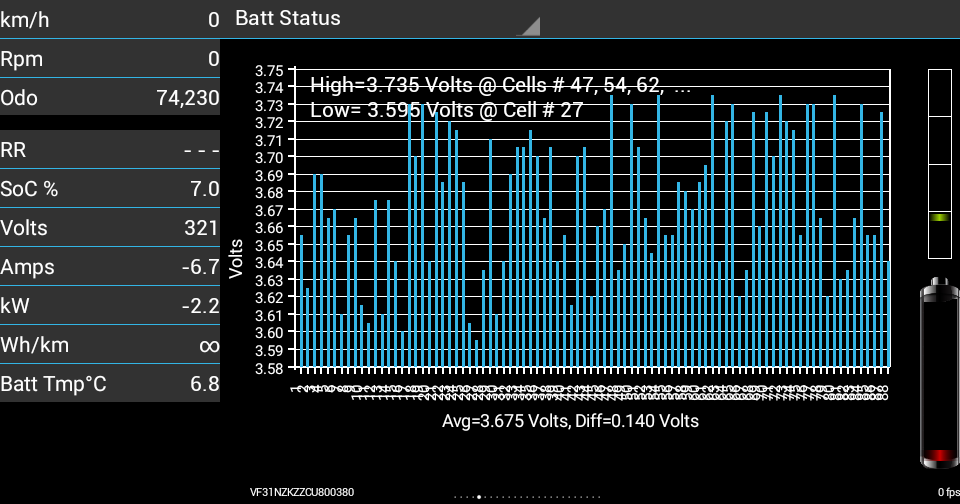Why don't I like a Nissan Leaf or the first 15Mm with an electric car
I bought an electric car half a year ago and here I describe, what I have experienced and learned during this time.
At first, I called my Peugeot iOn an electric donkey because it stubbornly forced me to follow strict car feeding regime. Now I call it electric piglet, because it uses any option to soak its sides in mud and dust. During the winter, when there was salt water and porridge on, I washed theoretically white, actually gray, sides of my piglet even twice a week. I haven't found any ready-made mud guards on the internet, but when I think about next winter, I consider how to deal with it (the only thing that keeps me from it is bad look and/or floodline).
When driving this car in the winter, I spent electricity on heating only to thaw the window and warm the seat. I have realised that it is lot easier to dress warmly (as one other electric car owner wrote "as a coachman on a beech") and not to heat car, than to heat it and therefore charge it more frequently. Of course, if more charging sites will appear in Riga and elsewhere, I will try to use them. To not collect moisture in salon of the car (and for another reason you read on), I heat it up a little every night.
At the beginning of winter, standing in traffic during wet weather, the car had a bad habit stoping very suddenly, sometimes even with squeaking tires. I led it twice to the service to clean and check the brakes, but it didn't change anything much. With time I discovered that even though the front wheels were breaking too hard, the source of blame was the rear wheels with drum brakes, which catched and sent faulty data to the car computer. With the service masters we came to the conclusion that the rear brakes were used too little, were rusted, cold and wet. When I passed 100 metres with a engaged hand brake before entering congestions in Riga, braking until stopping became normal.
With my best half, we have drived 15Mm in half year, which is a little more than with previous petrol car, when we usually travelled around 20Mm a year. We've travelled more with an electric car, because it has a lower cost of driving. Before that, when driving Nissan Note, the cost of petrol was on average €110 per month, while the average "base" cost for electricity per month was €41. After purchasing the electric car, the average electricity cost at home (Latvenergo) is €76. Subtracting €41 "base" costs from it and adding an average of €24 per month for fast charging (Fitek), transport costs have averaged €60 per month for me.
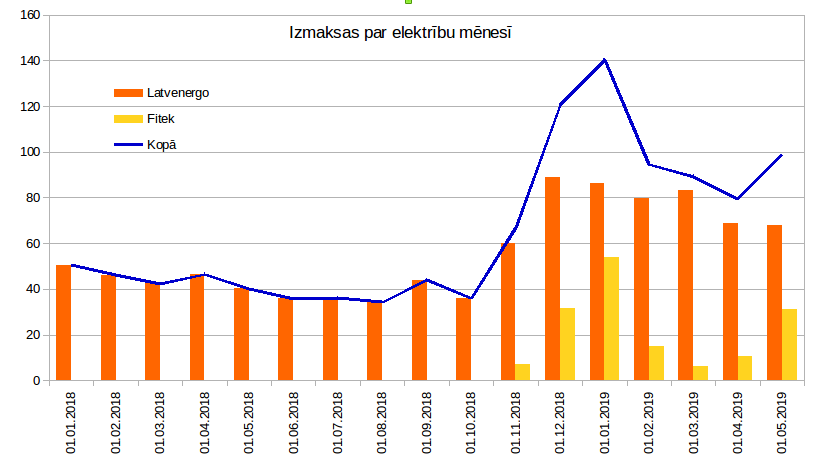
Total monthly electricity costs
The other reason we have traveled more is that we can use public transport lanes and free parking areas in Riga. If I usually selected a train for business in downtown Riga, but now I am driving the car more frequently. I usually choose times for less traffic, but if I'm in high traffic, I feel less guilty as others because, unlike their gas guzzlers, I don't produce emissions and noise in city.
I charge the car at home at night when there is less demand and electricity is cheaper, and elsewhere I use slow (up to 3.3 kW) charge with a single-phase 220V AC as much as possible.
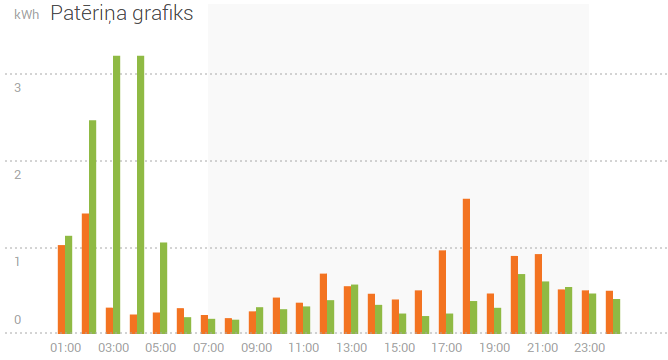
Daily electricity consumption with and (practical) without car charging
I choose the slow charge because it is more battery-friendly and because it is sometimes available for free. I don't feel any guilt when I charge the car for free. For example, when charging a car in the supermarket, I save 70 ¢, while I spent 40€ on purchases. So I look at free charging more like a pleasant comfort than a considerable discount. Also, where the free charge is covered by the state or local government, I do not feel in debt, because I believe that when I drive electric car and protect environment, I give to public more benefits than I receive in the form of electricity back.
I use fast charging only for longer trips, where there are no other options, because it is relatively expensive. When rounding price of an electricity to: 0,14 ¢/kWh, charging car with a quick charge, their revenues and electricity costs are as follows:
| Revenue per 20 minutes of time spent: | €3.00 |
| Theoretical maximum cost with maximum power of 50 kW: | €2.33 |
| Actual electricity costs with average power of 15 kW: | €0.70 |
I understand that some extra charge has to be in order to cover maintenance costs. However, the 3× charge (which can rise to 5× in cold weather when battery charges slower and longer) is quite high. If I charged my car only in fast charging stations, there would be virtually no economy on fuel. Transportation officials explain the surcharges by saying that "the price must promote alternative types of charging", but in my opinion they do not promote the introduction of an ecological cars in Latvia.
Battery charging is a non-linear electrochemical process. It can be charged most quickly and effectively (without producing excess heat) when it is practically empty. Therefore, when driving a longer road, I charge the battery at each charging location only as much as I need to get to the next charging location (of course with a spare, but as small as I dare, usually 10..15km).
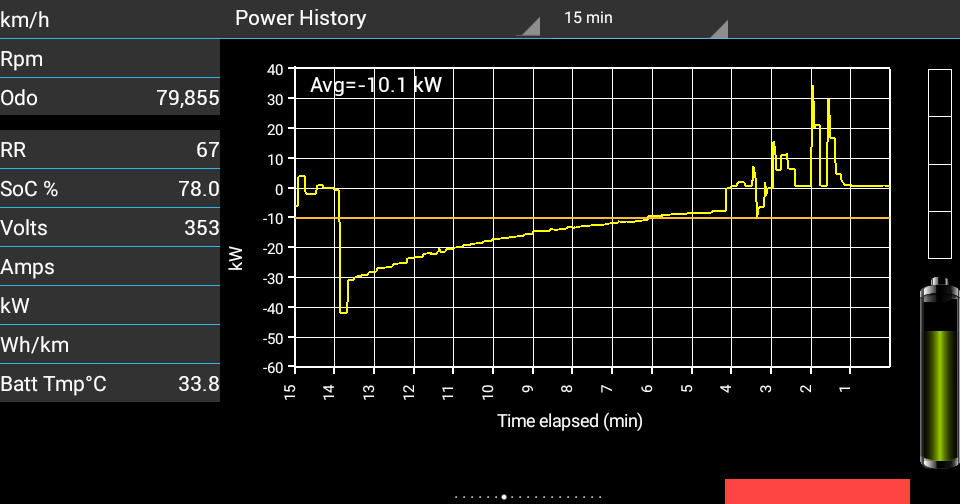
Actual power of rapid charge over time (14 to 4 min)
With longer trips (more than 100km), I now spend almost 2× more time on the road, but I see more places, which previously I just passed through or by. I don't drive tired now, because car forces me to take regular breaks. When I arrive at the destination, the weariness is from the total time spent on the journey, not from driving.
When driving a fossil fuel car, with single tank I can usually go forth and back, so there is no noticeable effect from wind, because if there is a tail wind in one direction, the other is opposite, that compensates each other. The stages traveled by my electric car are short, so I feel that the electricity consumption on the highway may be even a quarter higher, depending on the direction of the wind.
The manufacturer has not publicly described it, but car users have discovered that, when Peugeot iOn and its siblings is charging with single-phase alternating current, depending on the initial voltage and its drop on load, choose to charge with 16A (which is practically 13A) or 5A. It is "foolproof" enough because it doesn't overload when charging with a long, thin extension, but the inconvenience is that this car is very selective to the voltage offered.
Several times when I left the car to recharge at night, the battery was practically uncharged in the morning. At first I thought, maybe there's too much voltage drop in one of the three phases, so I changed the phase used for charging to the least loaded (with the highest voltage). Then I held a suspected charging plug in the car, which, perhaps, doesn't work properly. But then in Myimiev.com forum I found that the voltage can be too high. Since we are relatively close to the transformer, we have regularly voltage of 240V instead of official 220V, with the maximum I observed of 248V. But if the voltage reaches and exceeds 247V, the charge does not take place and that electric piglet gets offended and waits for the voltage level to drop to acceptable level (which usually occurs only in the morning when electricity consumption increases). To resolve this, I rewired time relay, so that both exits feed from the same phase, and in one outlet I connected a heater that switches on before the car is charged and disconnects few seconds after charging starts.
Counting only transport costs, I have saved €350 in half a year. I might have saved a little at the cost of servicing the car, but these costs are not so easily comparable as I sent car to repair brakes and purchased new tires.
Where have I spent the savings? I've spent it on additional things and even overspent:
€140 on Mitsubishi i-MiEV gear switch panel to complement the running modes with B (break) and C (cruise). I now use B mode virtually everywhere with harder regenerative braking, simply by releasing a power pedal, that is more comfortable driving in the city (hardly need to press brake pedal).
120€ on Type2 (62196-2) to Type1 (J1772) cable for the slow 220V 16A AC charging (used on the first day after received it in the Acropolis supermarket) and 15€ for plugs and cables for 2 types of 3-phase to to 1-phase extensions. (When it wasn't, there would have been an opportunity to use, when I made them I haven't used them yet).
€93 on the OBD Link LX adapter to get detailed information about the car with the free caniOn Android app through BlueTooth on my phone.
With this app, I can get nearly real-time information about how the car works. For example, I can see the long-term changes in battery capacity.
The theoretical capacity of these batteries is 50Ah, but in order to maintain their ageing, they are charged and discharged in a smaller range. The capacity used for new batteries is around 46Ah, and compared to other similar cars my remaining of 36Ah is an average.
To determine which cell has worst remaining capacity, I can compare voltage of individual cells when the residue is small. For example, cell 27 has the lowest voltage (so, the smallest capacity), which, along with some of the other worst, could sometime be replaced to the better:
Canion allows you to regularly save screen appearance in files that I assembled a video with Cinelerra with power consumption while driving from Riga to Ogre.
Since the Nissan Leaf is the most common electrical car in Latvia, it should be because they are popular and I should also feel some appreciation for them. The truth is that, while driving a longer road with breaks for fast-charging stations, one of the most unpleasant things is waiting in queue (all rapid chargers in Latvia support only one car charging at a time). If that happens, in virtually 100% of cases, before me like a fat cow, some Nissan Leaf is carving intolerably slowly its electricity. And because their charging socket is in the middle of the front of the car, it is 50% probability that it will be in the middle of two reserved lanes, so that I can't stand by side even with my narrow piglet. So now in every Nissan Leaf I basically see only a competitor at an electric trough.
Created by Valdis Vītoliņš on 2019-05-19 18:20
Last modified by Valdis Vītoliņš on 2019-05-22 06:21

